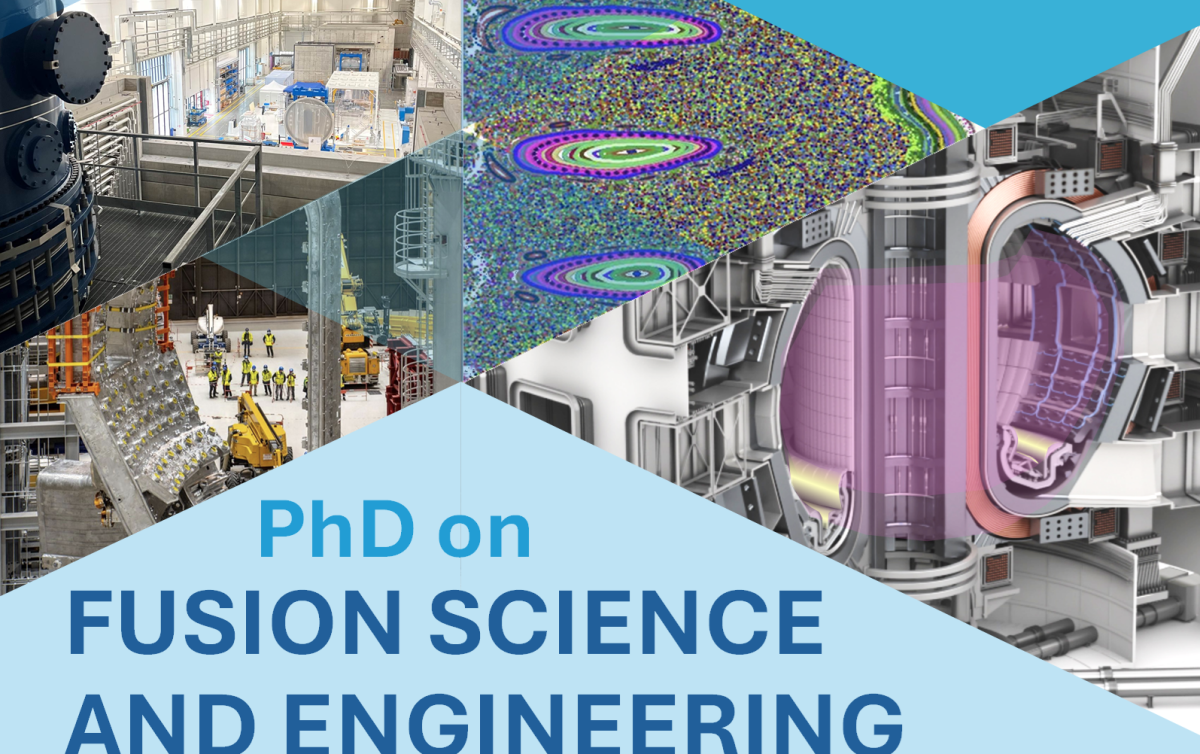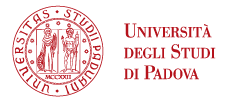Admission and Application Procedures

CALL FOR ADMISSION TO PHD COURSES - XLI CYCLE
FINAL RANKING AVAILABLE HERE
Call for application
Procedure di ammissione
TEMPLATES TO BE USED
WARNING: only the project written using this document template will be considered.
Figures and GANTT chart are not included in the page count
Research Project template
Curriculum Vitae template
RESEARCH TOPICS DESCRIPTION
3 positions with open topic | |
Optimization of the negative ion source prototypes for the ITER injector. (funded by ITER Organization through Centro Ricerche Fusione) | Neutral beams are used as main heating mechanism for fusion plasmas, with a major role also in future devices, including ITER. The next step in the research and development is the ITER neutral beams at the neutral beam test facility in Padova. This PhD position addresses the preparation of the next generation of neutral beam researchers in view of ITER. In the recent operations of the prototype sources, it was shown that optimizing the negative ion production and acceleration mainly concerns the RF coupling efficiency and the uniformity of the plasma in the extraction region, also exhibiting a dependence on the magnetic field at that location on the accelerated beam. These topics shall be addressed by numerical and experimental techniques in order to promote the advancement of source operation and design enhancements. Contact person: prof. Emanuele Sartori |
Engineering design and development for the ITER neutral beam injector prototypes | Neutral beams are used as main heating mechanism for fusion plasmas, with a major role also in future devices, including ITER. The next step in the research and development is the ITER neutral beams at the neutral beam test facility in Padova. This PhD position addresses the preparation of the next generation of neutral beam researchers in view of ITER. The challenges in the engineering design, and the technical aspects related to the operation of the experimental devices and the whole facility, concerns all engineering fields: electric, fluid dynamics, control engineering, cryogenics and thermo-mechanics. The success of the first campaign of the full-size ITER neutral beam prototype depends on the integrated operation of auxiliary units as well as of the in-vacuum components. Examples of research activities include the operation of the cryogenic plant and its integration with the cryogenic pump, the mechanical and electrical design improvements of the ion source, the integrated control systems and the preparation of the beamline components for the installation and first use. Contact person: dott. Diego Marcuzzi |
Development of magnetic and electrical systems for thermonuclear fusion devices | Magnetically confined thermonuclear fusion devices are the most promising for large-scale energy production by using magnetic fields to contain hot fusion fuel in the form of plasma. These magnetic fields, created by electric currents and magnetic materials, prevent the plasma from dissipating, enabling the high temperatures and pressures needed for fusion reactions. A significant milestone in this field is the ITER project, a 500-MW heat-generating tokamak fusion reactor under construction in France. In Padua, at Consorzio RFX, the new RFX-mod2 machine is set to begin operations in 2026 contributing to the solution of key issues in the roadmap to ITER, including MHD instability control, internal transport barriers, edge transport and turbulence, isotopic effect, high density limit and three-dimensional (3D) non-linear MHD modelling. RFX-mod2 can generate both circular and shaped tokamak plasmas, supporting exploration of single and double-null configurations, including negative triangularity and low-q regimes. H-mode transitions can be induced via edge radial electric field manipulation using a polarized electrode, facilitating studies on ELM mitigation through applied magnetic perturbations. The challenges in the engineering design, and the technical aspects related to the commissioning and start up of RFXmod2 concern all engineering fields, in particular: electric, electronic and control engineering. The first plasma and the experimental campaigns depend on the integrated operation of the main plants and all the auxiliary units as well as of the in-vacuum components and sensors. Examples of research activities include the operation of the magnetic circuits (magnetizing, toroidal, poloidal), the integration of the in-vessel sensors for the control of the plasma and the safety of the machine, the design improvements of the system for the protection of the coils, and enhancements to the performance of the RFX-mod electrical power system to maximize the benefits of the new machine configuration. Contact person: dott. Matteo Brombin |
Application of non-linear control techniques to MHD stability of fusion devices | The Rfx-mod2 device is ideally suited for the study and development of state-of-the art fusion plasma control, in particular magnetic feedback control of MHD dynamics. With the capability of operating both in tokamak and Reversed Field Pinch configurations, it represents a relevant environment for a wide range of instabilities. This Ph.D. project will address advanced techniques for control of MHD modes (e.g. Resistive Wall Modes, Tearing Modes). Realistic models of plasma stability, active and passive structures will be developed and implemented as a flight-simulator tool. Simulations of active control with magnetic feedback will be then used to develop controllers for different experimental scenarios, with both PID and MPC techniques. Control of Tearing Modes will be developed, based on non-linear models, for real-time application on RFX-mod2. Also on this topic, passive structures shall be taken into account, with the required model reduction techniques. Finally, software modules shall be developed for implementation in the real-time control framework. Verification of models and controllers in dedicated experiments is planned. Contact person: dott. Leonardo Pigatto |
High Voltage insulation in the Neutral Beam Injectors for Fusion Reactor | High voltage vacuum insulation is crucial for ITER's Neutral Beam Injector (NBI) development. The MITICA prototype in Padua aims to achieve 1 MV DC insulation in vacuum. Achieving this target has broader implications for particle accelerators, fusion devices, and space technologies. The research project will focus on the mechanisms underlying the voltage conditioning process of large gap-large area configuration, and on the behavior of the spark gap during the voltage conditioning and during the overvoltage occurrence. High voltage experiments in vacuum will be carried out at dedicated facilities (High Voltage Padova test Facility and High Voltage Short Gap Test Facility), also in preparation of the high voltage conditioning of MITICA. The development and validation of advanced numerical models is expected. Contact person: prof. Nicolò Marconato |
Integration,characterization, optimization of the Non-Evaporable Getter technology in large vacuum systems for fusion applications: the case of SPIDER beam source | In Padova, at the Neutral Beam Test Facility, the prototype neutral beam injectors for ITER are being developed. Huge vacuum systems have a key role for the successof these large experiments. In the next years, a very large one-of-a-kind Non-Evaporable Getter pump will be installed: research activities are necessary for its optimal use, including modelling and experimental tests of gas-material interaction, thermal and mechanical aspects, integration and operation of the ion beam source. The PhD project is fully integrated in the effort of the fusion community towards the start of ITER, in a joint collaboration with a highly innovative Italian industrial company, and offers the opportunity to work in an exciting international environment as well as in an industrial context devoted to research & development. Contact person: Enrico Maccallini |
***DOWNLOAD SECTION*
